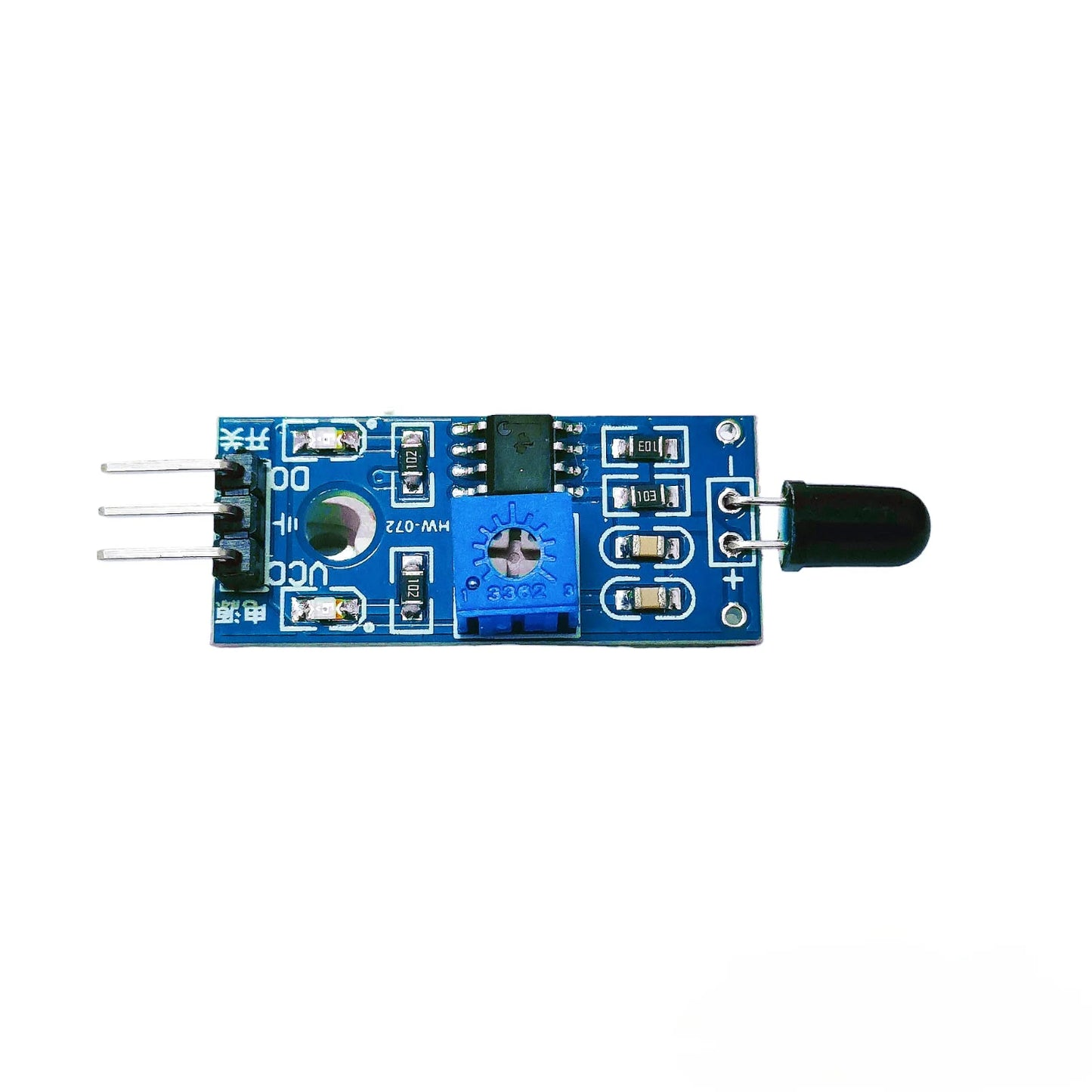Harish Projects
Fire Flame Sensor Module | Infrared Flame Detection Sensor | Compatible with Arduino, Raspberry Pi & IoT Projects
Fire Flame Sensor Module | Infrared Flame Detection Sensor | Compatible with Arduino, Raspberry Pi & IoT Projects
Couldn't load pickup availability
Share
Specification
- Voltage: 3V to 9V
- Pins: GND, VCC, Signal (A0)
- Response Time: Quick Detect
Description
A fire flame sensor module is typically an electronic device designed to detect the presence of a flame or fire. It is commonly used in fire detection and prevention systems, as well as in various industrial applications where flame monitoring is required.
Here are some general specifications that you might find in a fire flame sensor module:
- Sensitivity: The module should have adjustable sensitivity to detect flames of varying intensities.
- Detection Range: It should have a specified range within which it can detect flames effectively. The range can vary depending on the specific module.
- Response Time: The module should have a fast response time to quickly detect the presence of a flame and provide a signal or output.
- Output Signal: The module may provide different types of output signals, such as a digital signal (e.g., high/low) or an analog signal (e.g., voltage or current proportional to the flame intensity).
- Operating Voltage: The module will typically require a specific voltage range to operate correctly. Common voltage ranges include 3V or 9V.
- Mounting: It may come with mounting options to facilitate easy installation, such as screw holes or adhesive backing.
- Environmental Considerations: The module should be designed to operate within specific environmental conditions, such as temperature and humidity ranges.
- Size and Form Factor: The physical size and form factor of the module may vary, depending on the manufacturer and intended application.
Please note that the actual specifications of a specific fire flame sensor module can vary significantly depending on the manufacturer, model, and intended use. It’s best to refer to the datasheet or documentation provided by the manufacturer for accurate and detailed specifications of a particular module.



Good
Good
Buy ir sensor and break it's ir transmitter (white led ) then it will work like flame sensor



